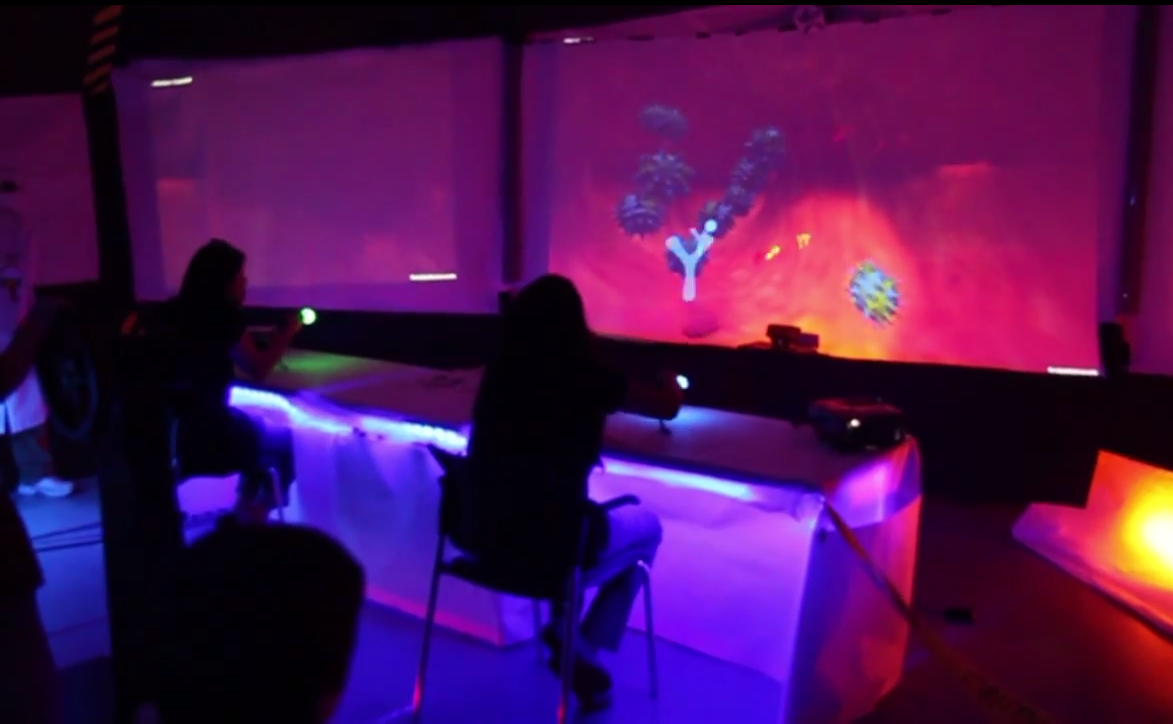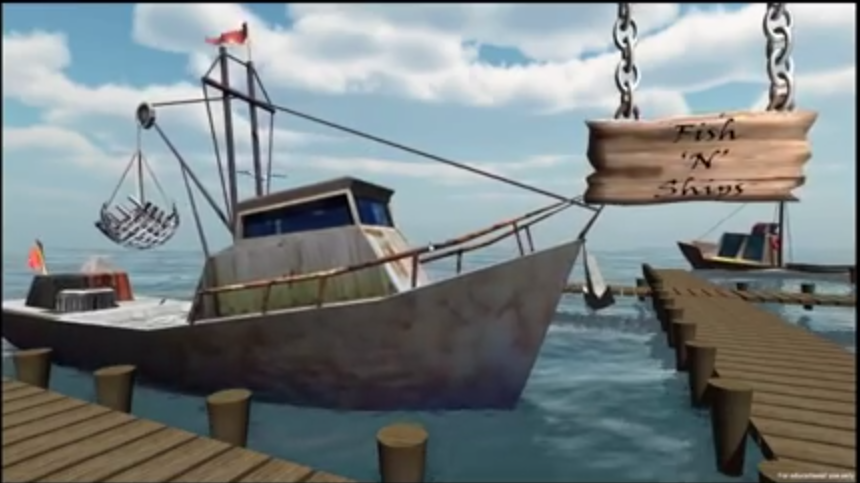Project V.E.S.S.E.L. was an incredibly ambitious 3 week long project involving the creation of an entirely immersive virtual and physical world. Our solution involved 2 PSMoves, 2 Wiimotes, and a Jam-O-Drum to simulate the deck of a ship shrunk down to fight viruses within the human body. The pilot steers using a helm and accelerator. 2 gunners use their PSMoves to fire on malicious infections. A navigator, meanwhile, has a top-down view of the world, and gives directions to the pilot on how to navigate the complex maze of vessels to find and destroy the enemy. The navigator’s contribution to the team is in sharing information and making navigational recommendations.
Alex was producer and designed and built the set.



